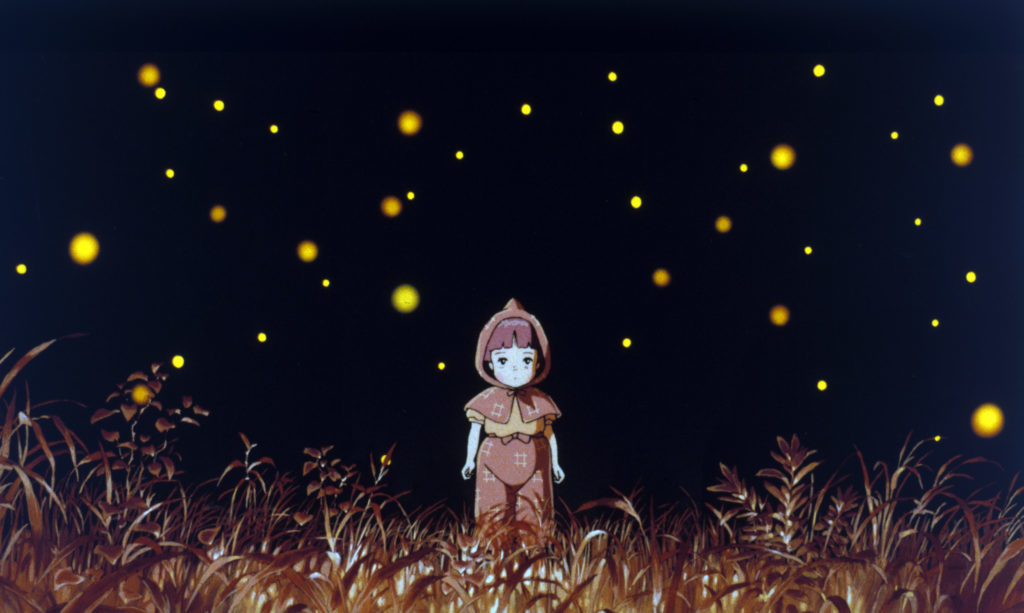Ahead of the August release of Studio Ghibli’s latest From Up on Poppy Hill, distributors StudioCanal are taking the opportunity to issue new prints of two of the revered Japanese animation hub’s earlier triumphs: both now twenty-five years old, yet still forever young. Hayao Miyazaki’s very charming My Neighbour Totoro, with its wide-eyed sisters discovering magical spirits in the woods, will doubtless be the better known (because most emblematic) of the two; Isao Takahata’s Grave of the Fireflies, however, comprises something else altogether.
This exceptional anti-War fable remains one of the few films made by Ghibli and shown in the West to tackle historical, rather than fantastical, forces: the collapse of Japanese society towards the end of World War II. A young brother and sister, left to fend for themselves after their father is called up by the Navy and their mother is killed in a U.S. air raid, receive a first-hand lesson in the sacrifices demanded of the Japanese people; carefree afternoons at the beach are traded against selling their mother’s kimonos, and eventually resorting to looting abandoned properties, simply to eat.
Compared to Totoro’s U-rated idyll, Grave of the Fireflies registers as a tough watch, but it’s an essential one, if we’re ever going to convince our children life’s hard enough as it is without needing to start fights that will only extend the suffering. What Takahata shows is that while it’s our leaders who make the decision to go to war, it’s us lot who invariably end up getting hurt as a result.
That pastoral quietness that marks out the best Ghibli films – a serene contemplation of the natural order of things – here keeps getting interrupted by fly-bys and falling bombs; though the sister Setsuko – playful, petulant, not quite fully aware of what’s going on around her – is an indelibly cute creation, the typically loving, rounded, well-observed character design gets scuffed-up and scratchier the longer the siblings’ plight wears on.
Takahata doesn’t hold back on depicting the almost banal horrors of wartime. He draws charred corpses piling up in the streets, maggots on operating room floors; Setsuko’s outburst “I’ve been having diarrhoea” is both an unexpected subtitle for an animated film, and the first real sign matters are about to get even more harrowing.
Once again, we witness how the first, and in many ways the most lamentable, casualty of war is youthful innocence: the scene that gives the film its title – in which the siblings gather bugs in a pot to illuminate the shelter in which they’ve set up makeshift home – is at once magical and deeply sad, since we know this is the last vestige of a childhood cut tragically short. (The fireflies are mirrored, unhappily, by the phosphorescence of the bombs that fall from the sky.)
In its child’s-eye view of the displacement caused by international conflicts (the kids are briefly taken in by a family keen to stress how their sacrifices are so much greater than anybody else’s), Grave of the Fireflies can’t help but remind first-time viewers of The Railway Children or the Narnia books, although history decrees no happy endings can possibly follow. Its closest equivalent in Western animation remains Raymond Briggs’ When the Wind Blows: a deeply committed work of art, tender, humane, and distressing in exactly the right way.
(MovieMail, May 2013)
Grave of the Fireflies is available on DVD through StudioCanal.

No comments:
Post a Comment